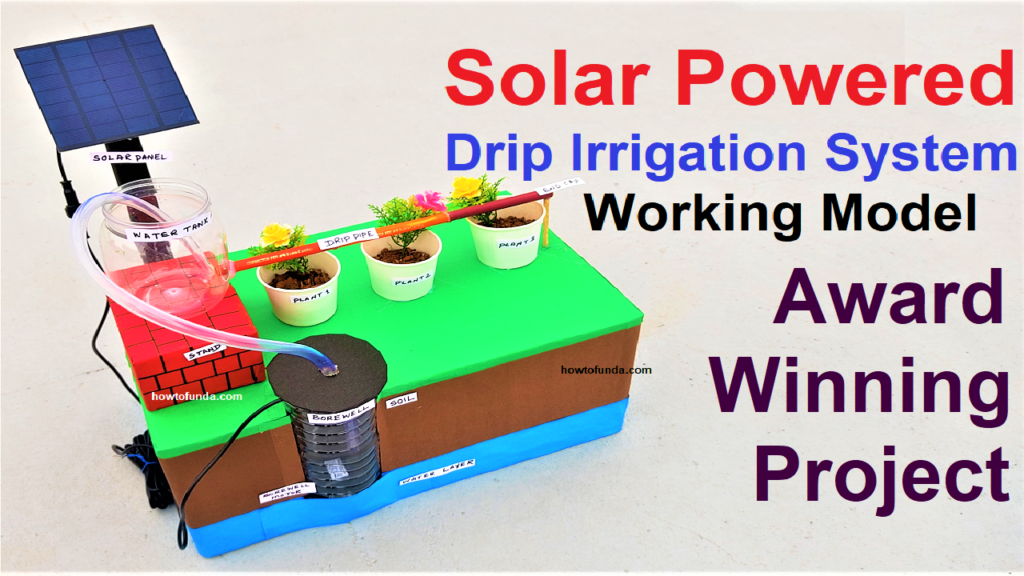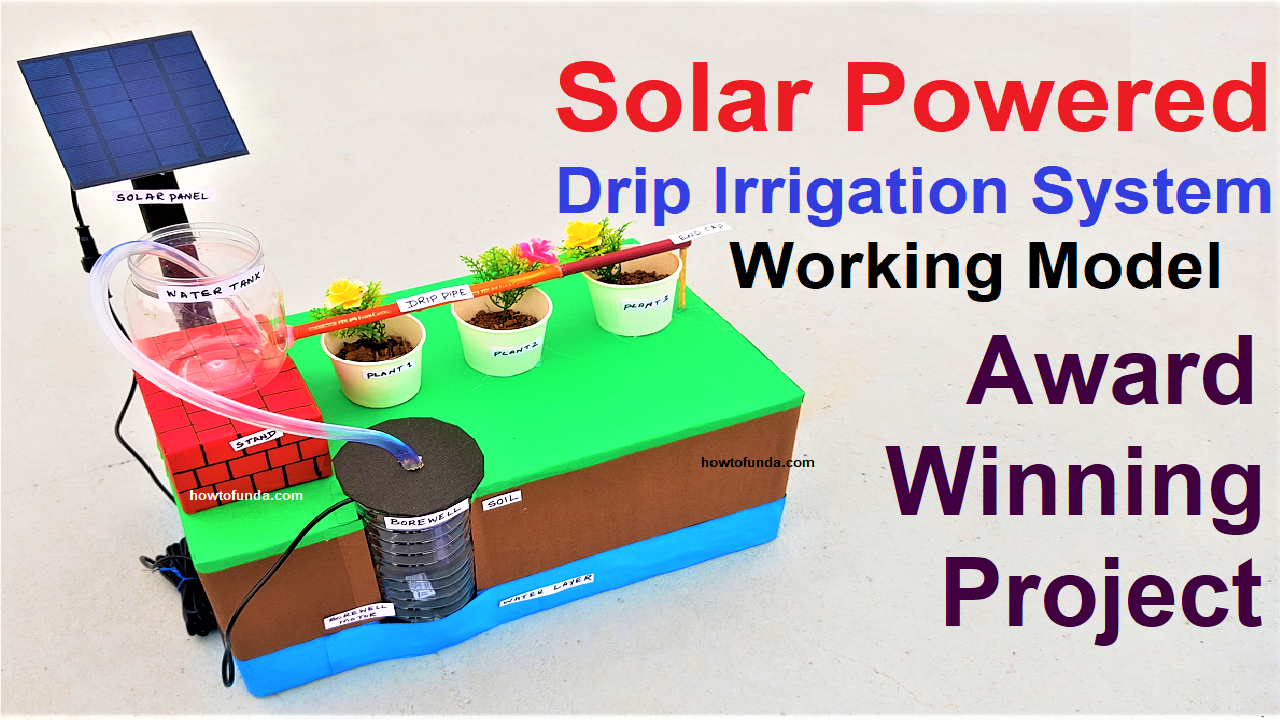Introduction
A solar-powered drip irrigation system is an innovative and sustainable solution for efficient agricultural water management. It utilizes solar energy to power water pumps and automate the delivery of water to plants through a network of drip irrigation tubes or pipes.
A solar-powered drip irrigation system is a smart and eco-friendly way to address water scarcity issues, improve agricultural productivity, and promote sustainable farming practices. It holds great potential for transforming farming in regions with abundant sunlight and limited access to traditional irrigation infrastructure.
How to Make the Solar Powered Drip Irrigation System Working Model
In this project, we will create a working model of a solar-powered drip irrigation system using a solar panel, DC motor, plastic trays, paper cups, and plants. Drip irrigation is an efficient method of delivering water directly to plant roots, conserving water and promoting healthy plant growth. This model will showcase how renewable energy can be utilized for sustainable irrigation practices.

Materials Needed:
- Solar panel
- DC water pump or motor
- Plastic trays (for holding water)
- Paper cups (for delivering water to plants)
- Plastic tubing or pipes
- Small plants or seedlings
- Soil or growing medium
- Water
- Support structure or stand
- Battery (for energy storage, optional)
- Wires and connectors
Step-by-Step Explanation:
- Assembling the Base:
- Set up a support structure or stand to hold the plastic trays at an elevated level.
- Preparing the Trays:
- Fill the plastic trays with water. These trays will act as reservoirs for the irrigation system.
- Setting Up the Solar Panel:
- Attach the solar panel to a location where it can receive direct sunlight.
- Connect the solar panel to the DC motor or water pump using wires.
- Connecting the Water Pump:
- Submerge the DC water pump in one of the water-filled trays.
- Connect plastic tubing or pipes to the water pump’s outlet.
- Drip Delivery System:
- Attach paper cups to the ends of the plastic tubing or pipes.
- Position the paper cups near the plant roots, allowing water to drip directly onto the soil.
- Wiring and Power Supply:
- Connect the wires from the solar panel to the water pump or DC motor.
- Optionally, connect a battery to store excess energy from the solar panel for operation during cloudy periods.
- Activating the System:
- When the solar panel receives sunlight, it generates electricity, powering the DC motor or water pump.
- Drip Irrigation:
- The water pump circulates water from the trays through the plastic tubing and into the paper cups, providing a steady drip of water to the plant roots.
Demonstrating the Drip Irrigation System:
- Explain the benefits of drip irrigation for water conservation and efficient plant growth.
- Highlight the use of renewable solar energy to power the irrigation system.
Questions Asked During Science Exhibition on Drip Irrigation System Working Model
Question: What inspired you to create a solar-powered irrigation system?
Answer: We were motivated to create a sustainable solution to address the challenges of energy scarcity and water conservation in agriculture.
Question: How do the solar panels convert sunlight into energy to power the water pump?
Answer: Solar panels contain photovoltaic cells that convert sunlight into electricity through the photovoltaic effect.
Question: What types of crops or agricultural settings is your system designed to serve?
Answer: Our system is versatile and can be adapted to various crops and agricultural environments, from small-scale farms to large plantations.
Question: What are the advantages of using solar energy to power irrigation compared to conventional electricity or diesel-powered pumps?
Answer: Solar energy is renewable, eco-friendly, and cost-effective, reducing reliance on non-renewable energy sources and lowering operational costs.

